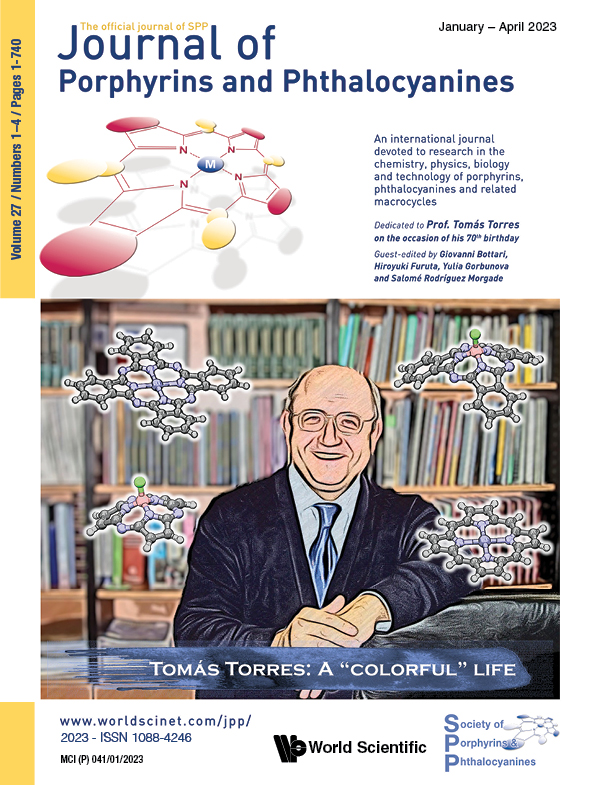Self-aggregation of -substituted bacteriochlorophyll-d analogs in aqueous micelle
Abstract
As naturally occurring bacteriochlorophyll- models, zinc methyl (31R)-bacteriopheophorbides- possessing ethyl, vinyl, and ethynyl groups at the 32-position were prepared by chemically modifying chlorophyll-. The synthetic molecules self-aggregated in an aqueous Triton X-100 micelle solution similarly as in the major light-harvesting antenna of photosynthetic green bacteria to give supramolecularly ordered large oligomers with red-shifted and broadened visible absorption bands, compared with the monomeric bands. The sequential hydrogenation of the 32-ethynyl to ethyl group via the vinyl group gradually suppressed the chlorosomal self-aggregation ability. The successive elongation of the 31-alkyl chain from a methyl to propyl group via an ethyl group also diminished the -aggregation ability. These decreases in the self-aggregation were ascribable to the steric enhancement of the 32-substituents near the 31-hydroxy group requisite for the -aggregation.

Dedicated to Prof. Tomás Torres on the occasion of his 70th birthday
Handbook of Porphyrin Science now available in 46 volumes


